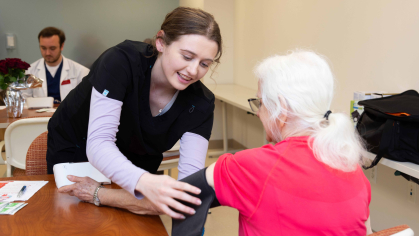Intestinal Parasite Could Hold the Key to Scar-Free Wound Healing
Rutgers Health researchers have discovered that a protein produced by parasitic worms in the gut enhances wound healing in mice.
In a study published in Life Science Alliance, researchers found that applying the highly purified protein to skin wounds sped up wound closure, improved skin regeneration and inhibited the formation of scar tissue. The protein's ability to enhance wound healing in human patients remains unknown but will be tested soon.
Skin wounds must close rapidly to prevent infection, but rapid closure can spur the development of scar tissue instead of properly regenerated skin. The balance between scarring and successful tissue regeneration is strongly influenced by immune cells recruited to the wound site. Many researchers seek ways to stimulate immune cell types that promote regeneration while inhibiting immune cells that promote tissue scarring.
“In this study, we have developed a novel therapy for the treatment of skin wounds that favors regenerative wound healing over tissue fibrosis and scarring,” said William Gause, director of the Center for Immunity and Inflammation at Rutgers New Jersey Medical School. “It provides a significant framework for the potential use of an easy-to-produce parasite protein as a therapy to promote cutaneous wound healing.”
Recent studies have suggested molecules secreted by parasitic worms might modulate the host's immune system in ways that promote tissue regeneration. The new study, led by Gause and Katherine Lothstein, a former PhD student in Gause’s lab who has joined the National Cancer Institute, focused on a protein called TGF-β mimic (TGM) derived from an intestinal parasitic roundworm called Heligmosomoides polygyrus.
The team found that daily topical application of TGM to 5-millimeter punch biopsy wounds in mice significantly accelerated wound closure compared with control treatments.
By Day 12 post-injury, TGM-treated wounds exhibited a distinct basket-weave collagen growth characteristic of normal, unwounded skin. Wounds that received no TGM developed the parallel collagen bundles typically associated with scar tissue.
The researchers also observed a marked increase in hair follicle development within the newly formed dermis of TGM-treated wounds, plus sebaceous glands and hair shafts, which are all indicators of successful skin regeneration.
The study involved a collaboration with Rick Maizels, a professor of parasitology at the University of Glasgow, who originally discovered this parasitic product.
The researchers determined that TGM promotes regenerative wound healing by binding to a signaling protein called the TGF-β receptor, found on the surface of many cell types in mice and humans, including immune cells. TGM treatment appears to stimulate the recruitment of immune cells known as macrophages into wounds and reprograms them to promote tissue regeneration.
Disclosure: Rutgers has requested and received patents for some of the intellectual property discussed in this story.


